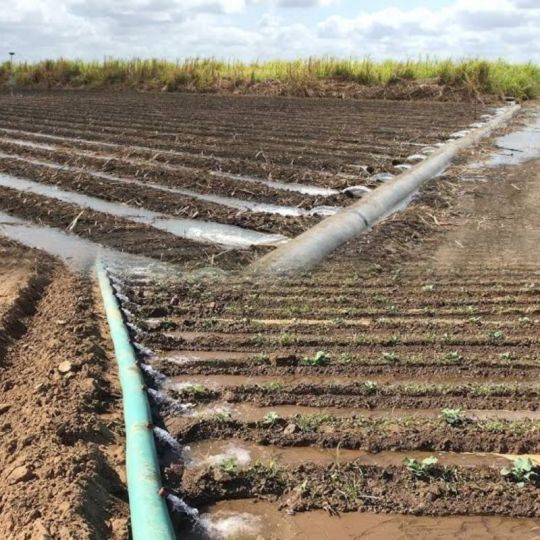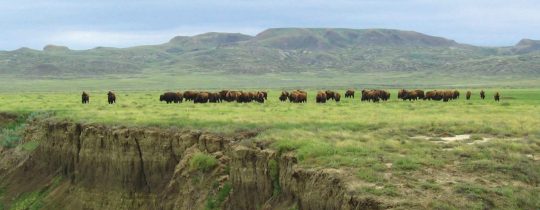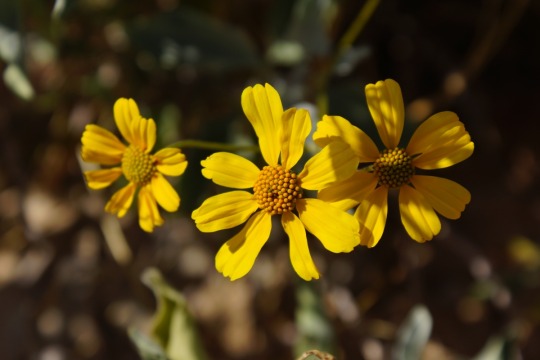#soil water conservation
Explore tagged Tumblr posts
Text
Robotic In Agriculture
What is your all time favorite agriculture automobile? Robotics in Agriculture: A New Level of Precision and Efficiency• Robots are replacing human labor in agriculture, enhancing precision, efficiency, and sustainability.• Robotic fruit and vegetable pickers use computer vision and advanced manipulators to harvest produce with precision.• Autonomous harvesters use GPS and LiDAR sensors for…

View On WordPress
#agricultural#Agricultural Density#AI &ML in agricultural#Automation and Robotics#dailyprompt-2129#dailyprompt-2130#dailyprompt-2131#IOt in Agricultural#irrigation#modern agricultural#percision farming#soil water conservation
0 notes
Text
Furrow irrigation, a time-tested agricultural practice
Furrow irrigation is an ancient and well-trusted way of watering crops that has been practiced for a very long time. This method involves creating small channels or furrows between the rows of crops to efficiently deliver water to the plants. It has proven to be especially effective for various crops like corn, soybeans, cotton, and vegetables. The basic idea is to make these channels alongside…

View On WordPress
#Agricultural practice#Ancient farming#Crop growth#Crop rows#Crop watering#Evaporation#farming techniques#Field management#Furrow irrigation#Gravity flow#Irrigation methods#Row crops#Runoff#Soil infiltration#Soil preparation#Sustainability#Traditional agriculture#Water conservation#Water distribution#Water efficiency
2 notes
·
View notes
Text
voting is important it tells u which of ur local offices are uncontested and where u have a chance to get in on a technicality
2 notes
·
View notes
Text
I work in conservation in Iowa, and here there’s only .1% of prairie habitat remaining. every scrap left has to be fought for by conservationists, and you have to seek it out to be able to see it, and it makes me so sad because I cannot put into words the incredible beauty of a true prairie
I’ve seen mountains, I’ve seen the ocean, I’ve been to Hawaii and Yellowstone and the glaciers in Alaska, and I’ll take an oaken savannah in bloom over any of them
I hope everyone understands, when I say “most endangered habitat on earth”, I mean temperate grasslands.
They’re more endangered than tropical rainforests, coral reefs, the arctic tundra, all of those go-to environments that get more of the spotlight.
Where I live, maybe 25% of the prairie remains in a natural state and that number is dropping. Even these fragments are mostly missing the keystone species that maintain their health, like bison, wolves, and prairie dogs. I know this is the case for other grasslands like the pampas and steppe as well. Vast lands empty of many species that used to call them home.
If you live on temperate grasslands, hold onto them tight, because they’ve been exploited like no other land and most people don’t even know how far the devastation goes.

#I could talk about conserving prairie habitat for hours#we have such amazing animals and beautiful plants#and they make the soil better and the air and water cleaner#and people don’t care because it’s not mountains or ocean or approved by their HOA#no one is going to drain a mountain lake just to put in an Amazon warehouse#but an Iowa marsh?#with unfathomable biodiversity that functions as a pollutant sink?#who cares!!!#it doesn’t fit our commercial standard of natural beauty#and that means that it’s perfectly acceptable to tear it out and kill it right?!#rage and flames and explosions against industrialization
36K notes
·
View notes
Text
Why You Should Leave Grass Clippings on Your Lawn
Introduction
Bagging grass clippings after mowing may seem like the standard practice, but leaving them on the lawn offers numerous benefits. Known as grasscycling, this sustainable method enhances lawn health, reduces waste, and supports eco-friendly living.

1. Natural Nutrient Recycling
Grass clippings are a nutrient powerhouse, containing nitrogen, potassium, and phosphorus—the same key ingredients in commercial fertilizers.
Benefits:
Decomposed clippings feed your lawn naturally, promoting healthy, vibrant grass growth.
Reduces dependency on synthetic fertilizers, which can harm the environment when overused.
Did You Know?
Grass blades are made up of 85% water and decompose rapidly, releasing nutrients within days.
2. Moisture Conservation
Clippings left on the lawn act as a natural layer of mulch, reducing water loss from the soil.
How It Works:
The clippings shield the soil from direct sunlight, preventing evaporation.
Retained moisture ensures grass roots stay hydrated, even during dry spells.
Results:
Less frequent watering is needed, leading to water conservation and lower utility bills.
3. Enhances Soil Quality
Grasscycling contributes to the long-term health of your soil.
Enriches Soil Microorganisms:
Clippings encourage beneficial microorganisms that break down organic material.
Improved microbial activity leads to healthier soil and a stronger root system.
No Thatch Worries:
Unlike the misconception, grasscycling does not contribute to thatch buildup. Properly managed clippings decompose before thatch can form.
4. Saves Time and Effort
Eliminating the step of bagging clippings streamlines the mowing process.
Convenience:
No need to rake or collect clippings, making mowing quicker and easier.
Avoid trips to the compost site or landfill for disposal.
Cost-Effective:
Reduces expenses related to yard waste bags and landfill fees.
5. Eco-Friendly Lawn Care
Grasscycling aligns with environmentally conscious practices.
Reduced Waste:
Yard waste, including grass clippings, accounts for a significant portion of landfill material. Leaving clippings on-site minimizes this waste.
Lower Carbon Footprint:
Eliminating transportation and processing of yard waste reduces greenhouse gas emissions.
Best Grasscycling Practices
Mow Regularly
Avoid cutting more than one-third of the grass blade at a time to ensure clippings break down efficiently.
Use a Proper Mower
Mulching mowers are ideal for grasscycling, as they chop clippings finely for quick decomposition.
Mow When Conditions Are Right
Dry grass clippings spread more evenly and decompose faster.
Distribute Clippings Evenly
Avoid creating clumps, which can smother the lawn or lead to uneven growth.
Monitor Lawn Health
Keep an eye on the lawn to ensure clippings don’t form a thick layer that blocks sunlight or moisture.
Professional Support for Grasscycling
For homeowners new to grasscycling or dealing with specific lawn challenges, contacting a lawn care service near me ensures expert guidance. Professionals can tailor mowing practices to your lawn’s unique needs, making grasscycling more effective.
Conclusion
Grasscycling is a win-win for both your lawn and the environment. By leaving clippings on the lawn, you’ll enjoy natural fertilization, water conservation, improved soil health, and reduced yard waste. It’s an easy, cost-effective, and sustainable way to maintain a lush, healthy lawn.
0 notes
Text
Core beliefs and Sunday farming update.
#bears#cats#community#dailyprompt#dailyprompt-2090#Etiquette#folklore#housepanthers#hugelculture#humor#Lindsay Road 40#meditation#permaculture#resiliance#retirement#soil science#soil-production#water conservation
0 notes
Text

New soil surfactant research in 2024
#soil#lawn care#lawn & garden#turf grass#turfgrass#turf health#plant health#surfactants#horticulture#soil moisture#water conservation
0 notes
Text
Tata Steel and StanChart Launch Watershed Project in Jharkhand
1500 households to benefit from soil and water conservation initiative in Noamundi Tata Steel Foundation and Standard Chartered Bank partner to implement watershed and climate proofing project in West Singhbhum. JAMSHEDPUR – Tata Steel Foundation and Standard Chartered Bank announce collaboration on watershed project in Noamundi Block, West Singhbhum. The Integrated Watershed and Climate Proofing…
#बिजनेस#business#climate resilience#Community Development#Noamundi block#soil conservation#Standard Chartered Bank#sustainable agriculture#Tata Steel Foundation#Water Management#watershed project#West Singhbhum
0 notes
Text

#swanton public library#all ages#pollinators#lucas soil and water conservation district#it's tomorrow!
0 notes
Text
Bring your garden to life 🌿 👩🏼🌾

Here’s a step-by-step guide to help you use Terreplenish effectively:
Materials Needed:
Terreplenish regenerative soil microbes (24 ounces)
Water (5 gallons)
Large container or bucket (at least 5-gallon capacity)
Watering can or spray applicator
Steps:
Prepare the Solution:
Pour 24 ounces of Terreplenish regenerative soil microbes into a large container or bucket.
Add 5 gallons of water to the container, mixing thoroughly to ensure the microbes are well-diluted and evenly distributed in the water.
Application:
Fill a watering can or spray applicator with the diluted solution.
Apply the solution evenly over the soil in your garden. Ensure thorough coverage by watering all areas, focusing particularly on the base of the plants where the roots are located.
Frequency of Application:
For optimal results, apply the Terreplenish solution once a month during the growing season.
In the early stages of plant growth or if the soil is heavily depleted, you may apply every two weeks.
Tips for Success:
Timing: Apply the solution in the early morning or late afternoon to prevent evaporation and ensure the microbes have the best conditions to penetrate the soil.
Consistent Watering: Maintain consistent moisture levels in the soil to support the microbial activity and overall plant health.
Organic Matter: Enhance the effectiveness of the microbes by incorporating organic matter, such as compost or mulch, into your soil. This provides additional nutrients and improves soil structure.
Benefits of Using Terreplenish:
Improved Soil Health: Regenerative soil microbes enhance soil structure, nutrient availability, and water retention.
Increased Plant Growth: Healthier soil promotes robust root systems and vigorous plant growth.
Sustainable Gardening: Using natural soil microbes reduces the need for chemical fertilizers and supports sustainable gardening practices.
By following these steps and tips, you can maximize the benefits of Terreplenish regenerative soil microbes and create a thriving, productive community garden.
#microbes#conservation#climate solutions#climate and environment#climate#biodiversity#water#organic#soil fertility#environment#organic soil#ecosystem#agriculture#soil health#terreplenish
0 notes
Text
Uncover the Benefits of Eco-friendly Farming for Our Health and Environment
Introduction Eco-friendly farming, also known as sustainable or organic farming, has gained significant attention in recent years. With concerns about the environment and our health, many individuals are turning to sustainable farming practices to mitigate the negative impacts of traditional agriculture. In this blog post, we will explore the benefits of eco-friendly farming for our health and…
View On WordPress
#antibiotic resistance#biodiversity preservation#climate change mitigation#eco-friendly farming#environmental benefits#health benefits#nutrient-rich food#organic farming#pesticide-free produce#soil health#sustainable farming#Water conservation
0 notes
Text
AGRICULTURE 4.0: THE FOURTH REVOLUTION CHANGE THE FARMING PATTERN
Introduction Agricultural Revolution 1.0 The Agricultural Revolution 1.0, also known as the Neolithic Revolution, was a transformative period in human history that marked the shift from nomadic hunter-gatherer lifestyles to settled farming communities. This revolution occurred approximately 10,000 years ago, around 8000 BCE, and it had profound and far-reaching impacts on human society,…

View On WordPress
#agricultural#Agricultural Density#AI &ML in agricultural#Automation and Robotics#IOt in Agricultural#irrigation#modern agricultural#percision farming#soil water conservation
1 note
·
View note
Text
I'm researching 1950s-60s land values for my real person job, and did you know that the usda has a record of basically any agricultural report published in the last hundred+ years for USAmerica? And its not just historical they have all the recent reports as well.
And its not solely farm stuff (tho if for any reason u wanted to know the condition of grazing feed in the bluestem pastures of Kansas from 1964 to 1971 they've got u) there is also records of costs for daily life- things like clothing or appliances or food.
Also you can find out the market for a 100lb slab of beef in Nebraska in July 1955.
#i just really love it when my job gets wierd like this#special shout out to the inventory of soil and water conservation by state including PR and the Virgin Islands in 1967 u look rad bro#reference stuff#📊
1 note
·
View note
Text
Rest in Power Yacouba Sawadogo, who “single-handedly has had more impact on soil and water conservation than all the experts combined. He managed to build a forest out of nothing, a forest of 30 hectares with the largest biodiversity in the Sahel. At the end, he became a sort of national hero.” – Chris Reij, a Dutch geographer and a senior fellow of the World Resources Institute in Washington
#soil#tree#forest#trees#trees and forests#water#conservation#sustainability#drought#Sawadogo#burkina faso
1 note
·
View note
Text
Growing Encelia farinosa (Brittlebush) from Seed: A Home Gardener's Guide
Encelia farinosa, commonly known as Brittlebush, is a beautiful and hardy desert shrub that can add a touch of vibrant color and resilience to your home garden. If you’re a home gardener looking to cultivate this charming plant from seed, you’re in for a rewarding experience. In this blog post, we’ll guide you through the step-by-step process of starting Encelia farinosa from seed, ensuring a…

View On WordPress
#Arid Garden Techniques#Brittlebush Propagation#desert gardening#Drought-Tolerant Plants#Ecosystem Support#Encelia farinosa#Gardening in Dry Climates#Gardening Tips#Low Maintenance Gardening#Native Plants#Plant Growth#Pollinator-Friendly Plants#Seed Collection#Seed Germination#Soil Adaptation#Sustainable Landscaping#water conservation
0 notes
Text
Value pf Trees
rees hold immense value for our planet and well-being. They are the lungs of the Earth, absorbing carbon dioxide and releasing oxygen, crucial for our survival. Trees provide habitat for wildlife, support biodiversity, and contribute to ecological balance. Their shade and cooling effects reduce urban heat, conserving energy. Additionally, they prevent soil erosion, purify water, and enhance soil fertility. Economically, trees yield resources like wood, fruits, and nuts. Beyond tangible benefits, trees offer mental and emotional respite, promoting psychological well-being. Recognizing their ecological, economic, and psychological significance, conserving and planting trees is vital for a sustainable and harmonious world.
#rees hold immense value for our planet and well-being. They are the lungs of the Earth#absorbing carbon dioxide and releasing oxygen#crucial for our survival. Trees provide habitat for wildlife#support biodiversity#and contribute to ecological balance. Their shade and cooling effects reduce urban heat#conserving energy. Additionally#they prevent soil erosion#purify water#and enhance soil fertility. Economically#trees yield resources like wood#fruits#and nuts. Beyond tangible benefits#trees offer mental and emotional respite#promoting psychological well-being. Recognizing their ecological#economic#and psychological significance#conserving and planting trees is vital for a sustainable and harmonious world.
0 notes